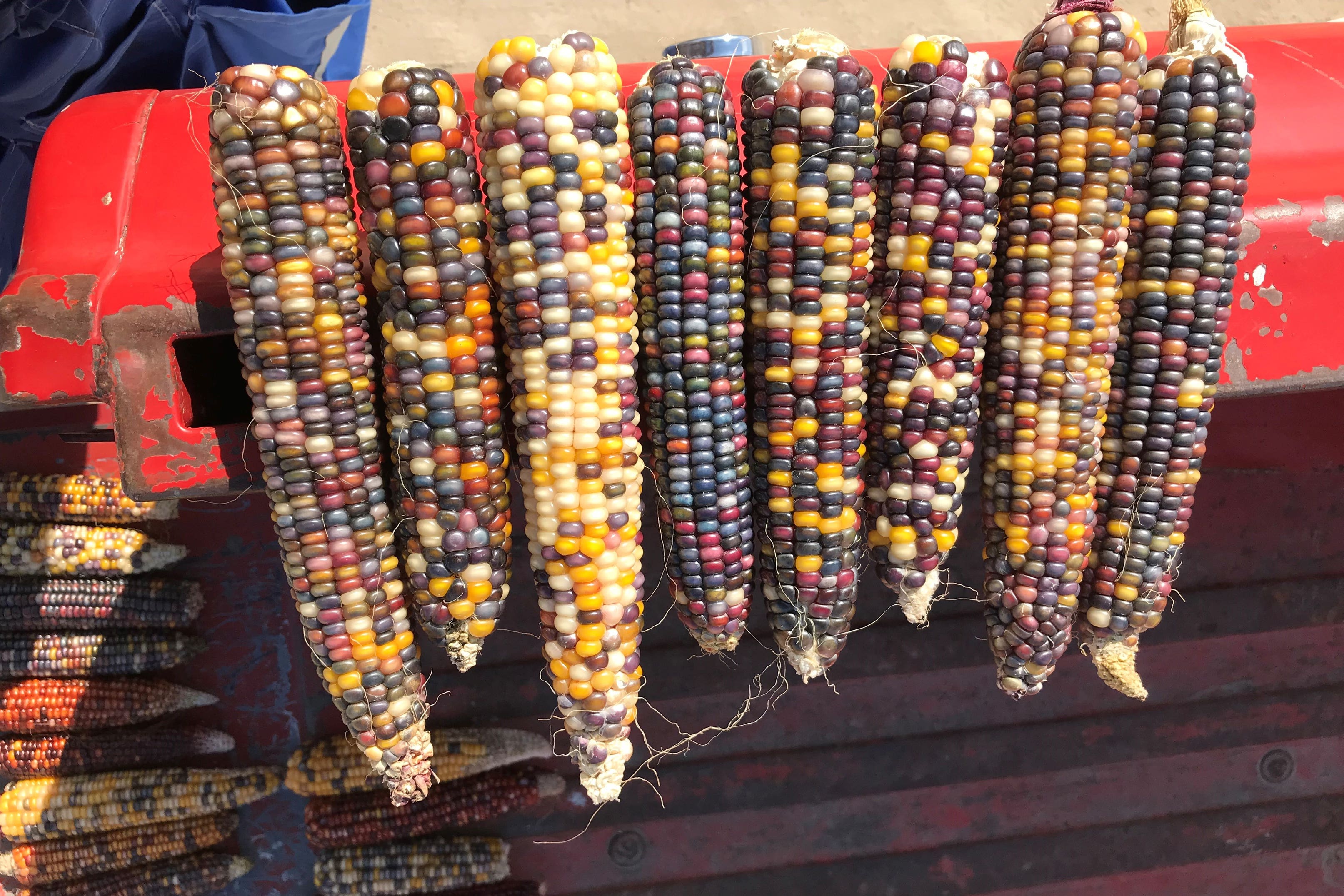Try growing these weird and wonderful veg in 2023
Speckled sweetcorn, white aubergines and orange cauliflowers could perk up the veg patch this year, says Hannah Stephenson.

Bored with growing conventional veg like orange carrots, green beans and white turnips? There are plenty of more adventurous options – including speckled sweetcorn, white beetroot and alternative aubergines – you could try.
A project set up by horticultural charity Garden Organic to protect rare seeds means gardeners can gain access to rarer heirloom varieties being conserved by the charity’s Heritage Seed Library. Other seed companies are also offering more unusual-looking varieties to help perk up your harvest.
Curious? Here are just a few of the weird and wonderful veg you could be growing in 2023…
White Devoy beetroot
This late-maturing, pure white beetroot has a delicate flavour and was derived from the purple variety ‘Devoy’. It produces an irregularly shaped, tapering beet with knobbly side roots. The foliage can also be cooked and eaten like chard, or the beetroot added to salads.
Beetroots do best in light soils that are rich, but have not been recently manured. The earliest sowings can be made into seed trays under glass in February or March. The leaves, as well as the roots, are good to eat. Varieties cross easily, so grow only one variety of seed at a time.
Available from gardenorganic.org.uk/hsl
Aubergine ‘White Knight’
Fancy some white aubergines for a change? This variety produces creamy-white fruits that grow up to 20cm long. An early maturing variety that is very ornamental and tasty, they are ideal for growing in containers and can be picked from August onwards, or when fruits are at least about 15cm long and the skin surface is still shiny. Can be roasted, sauteed, baked or served in hors d’oeuvres.
Available from dtbrownseeds.co.uk, marshallsgarden.com and mr-fothergills.co.uk
Alternative French climbing beans
Reading Purple, a climbing French bean, produces striking long flat purple pods and is tall, with purple-veined, dark green leaves and purple stems. The pods change colour to green when cooked and are stringless if picked young. Unusually, this bean loses its leaves as the pods begin to dry.
Alternatively, opt for a Tiger bean, another climbing French bean which is vigorous and easy-to-grow, producing small mauve-pink flowers followed by stringless green pods. It is tender and has a great flavour when eaten fresh; the tiger-striped dried beans are also tasty and eye-catching.
Available from gardenorganic.org.uk/hsl
Cauliflower ‘Amo 125’
The first orange Romanesco (marketed as an Amoresco type), not only is it orange on the outside, but it has orange coloration all the way through, even when cooked. This variety is perfect for cauliflower cheese or piccalilli.
Available from thompson-morgan.com
Mr Jefwa’s Callaloo
Mr Jefwa, a Ugandan Asian who moved to the West Midlands, acquired these seeds when visiting a friend in the late 1990s. He found them to be a tasty edible crop and continued to grow them and save the seeds, which he subsequently donated to Garden Organic’s Heritage Seed Library.
As well as tasting good, they look beautiful as an ornamental plant with dark purple-red flower spikes, providing a great example of a non-traditional crop that can be grown easily in the UK and will add much needed biodiversity to your veg patch. Use callaloo in the same way you use other leafy green vegetables – enjoy baby leaves raw in salads, while older leaves can be cooked like spinach or stir-fried.
Available from gardenorganic.org.uk/hsl
Tomato ‘Sundried Red Desire’
A sundried tomato from the vine? Well, yes. You can eat the fruit as fresh tomatoes, just like any other variety, but because the skin isn’t as shiny, it allows the fruit to dry on the vine without cracking, meaning it turns into a tomato raisin and gets sweeter tasting. You can leave the fruit on the plant to dry or harvest and let it dry in the house on a windowsill.
Available from thompson-morgan.com
Kaskinauris turnip
Originally from Finland, this was a type of turnip sown after burning the land. ‘Kaski’ means an area cleared by fire, and ‘nauris’ means turnip. This turnip originated several hundred years ago at a time when land was managed in this manner. It has a flattened disc-like shape and is purple skinned, with occasionally a yellow underside.
Available from gardenorganic.org.uk/hsl
Ornamental Corn ‘Fiesta’
This traditional ‘Indian’ corn produces kernels with various tones of blue, red, yellow and white. Fantastic for autumn decorating, maturing approximately 10-14 days earlier than other ornamental corn.
Cobs average 18-25cm in length with 50-70% purple husks. Start plants inside and plant them out after frost has passed when they are around four weeks old. They should be sown as a block with a minimum four plants by four plants to get maximum pollination.
Available from pennardplants.com or premierseedsdirect.com
For more information on Garden Organic’s Heritage Seed Library, visit gardenorganic.org.uk/hsl